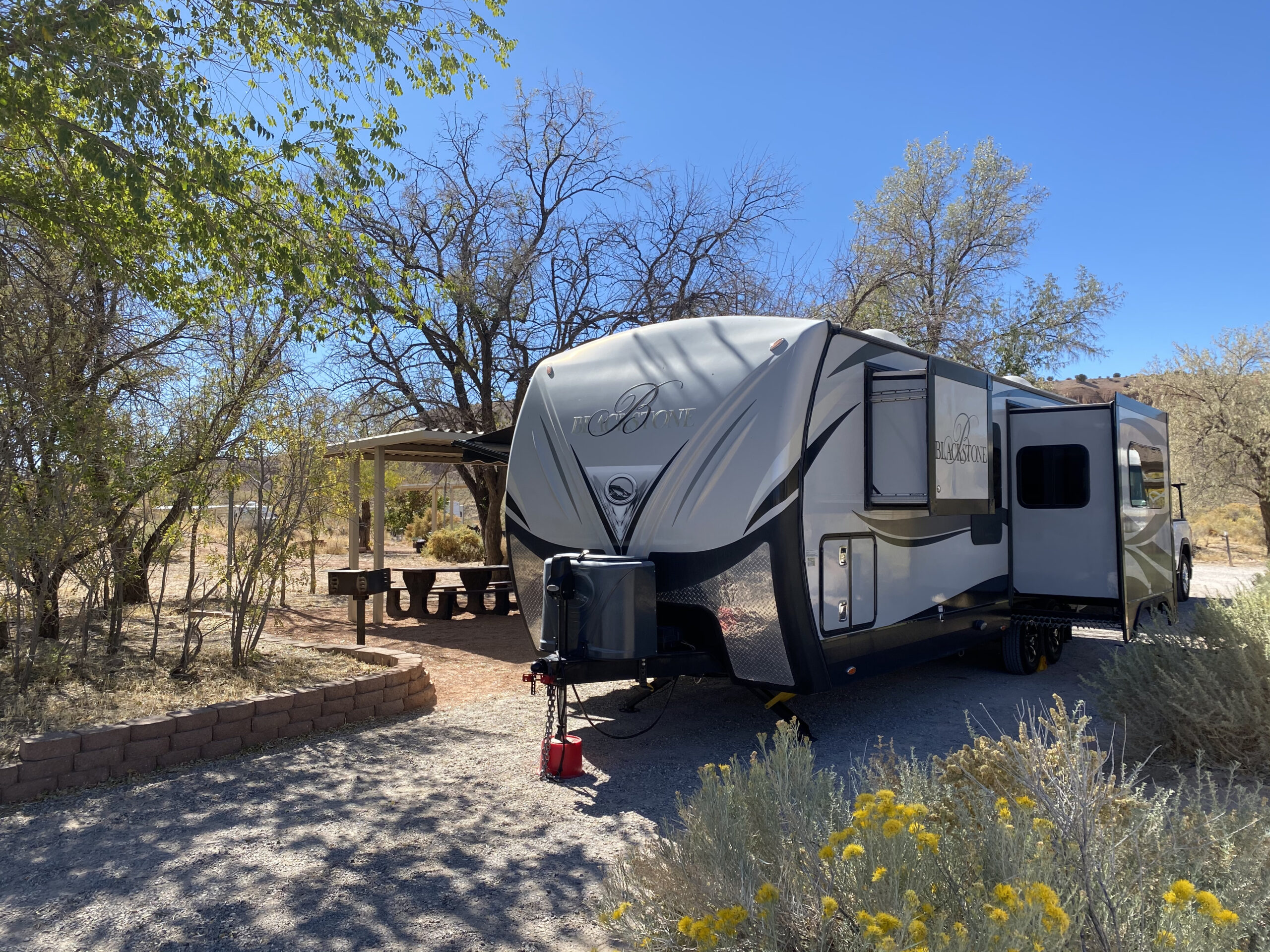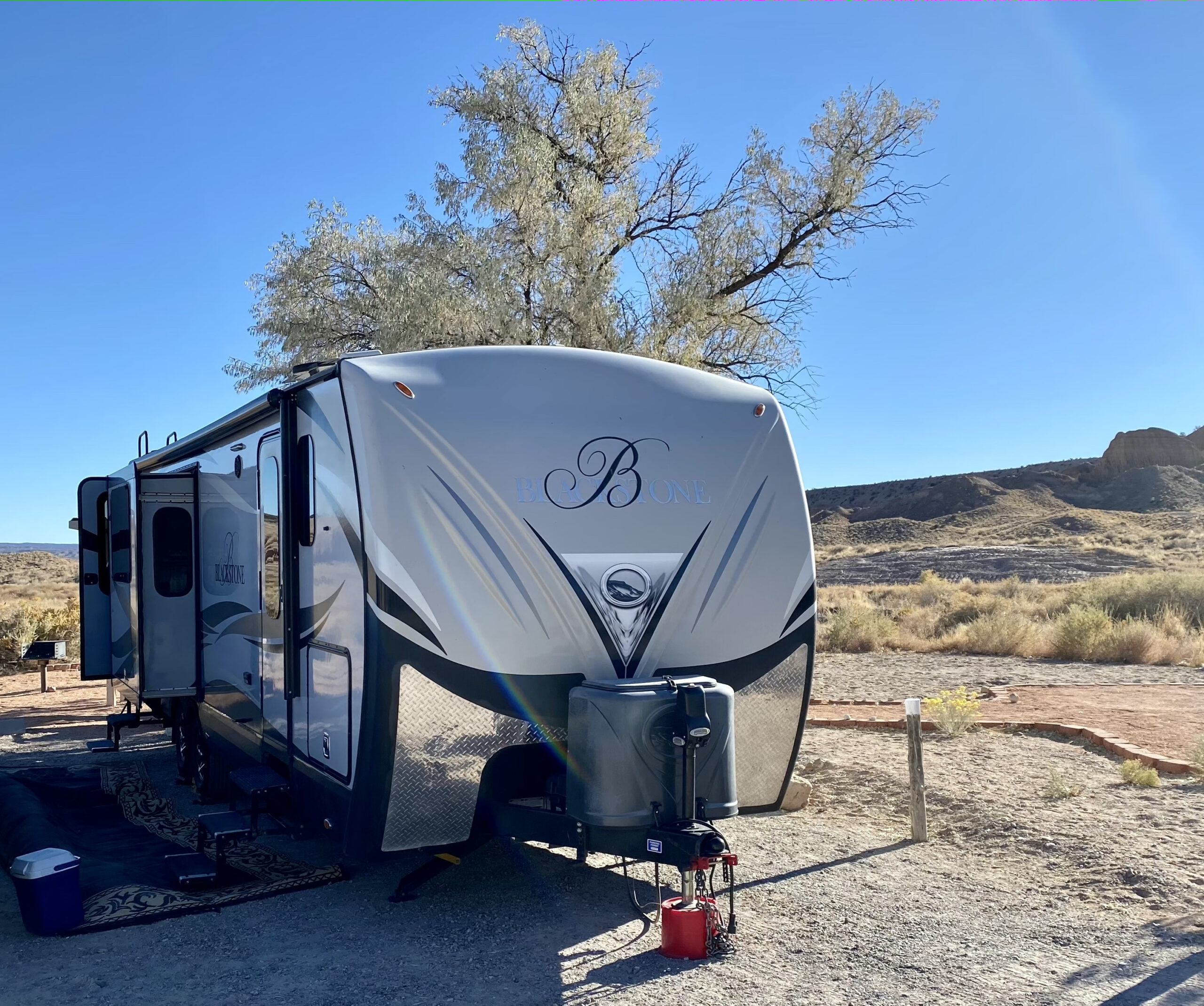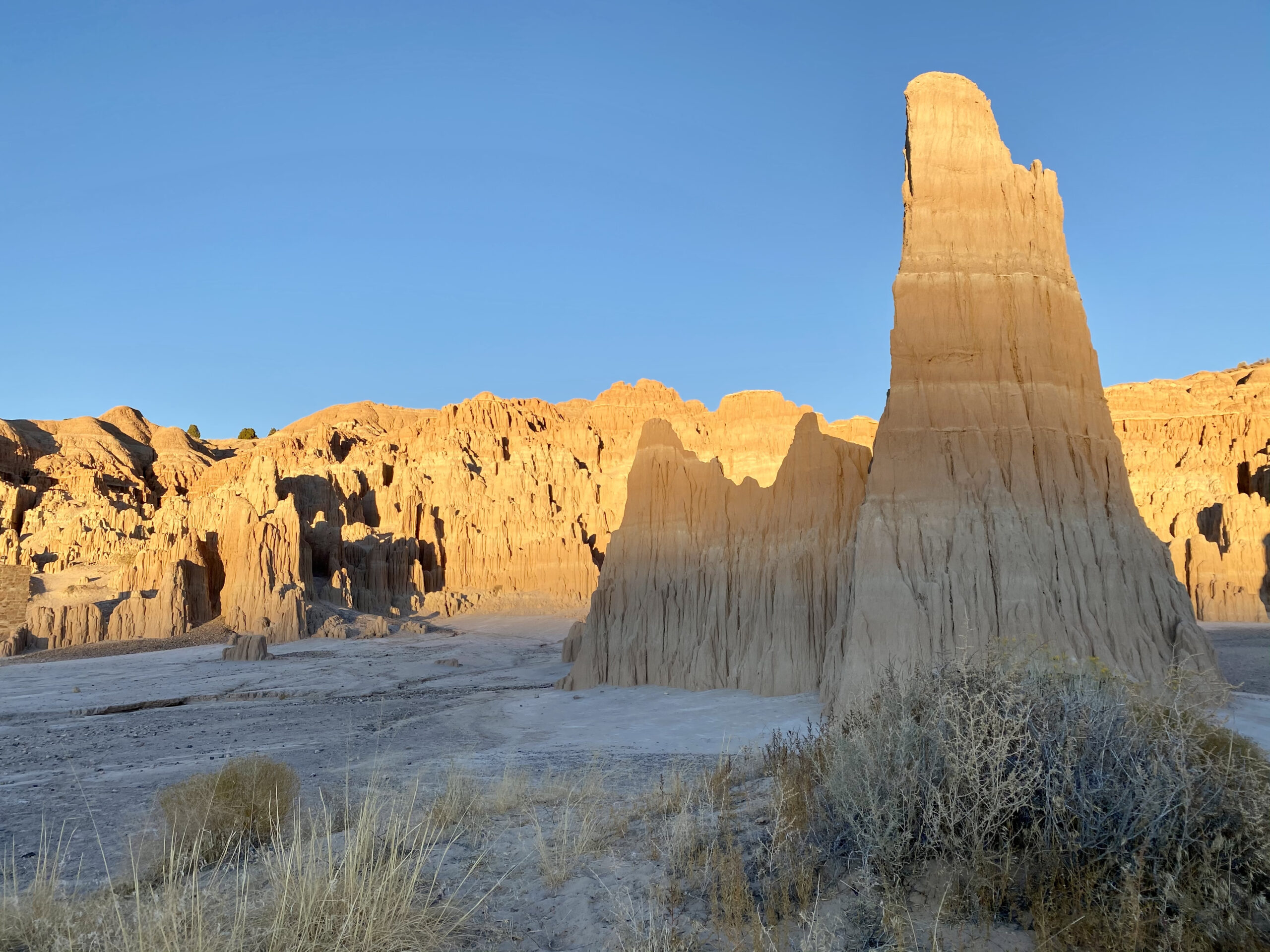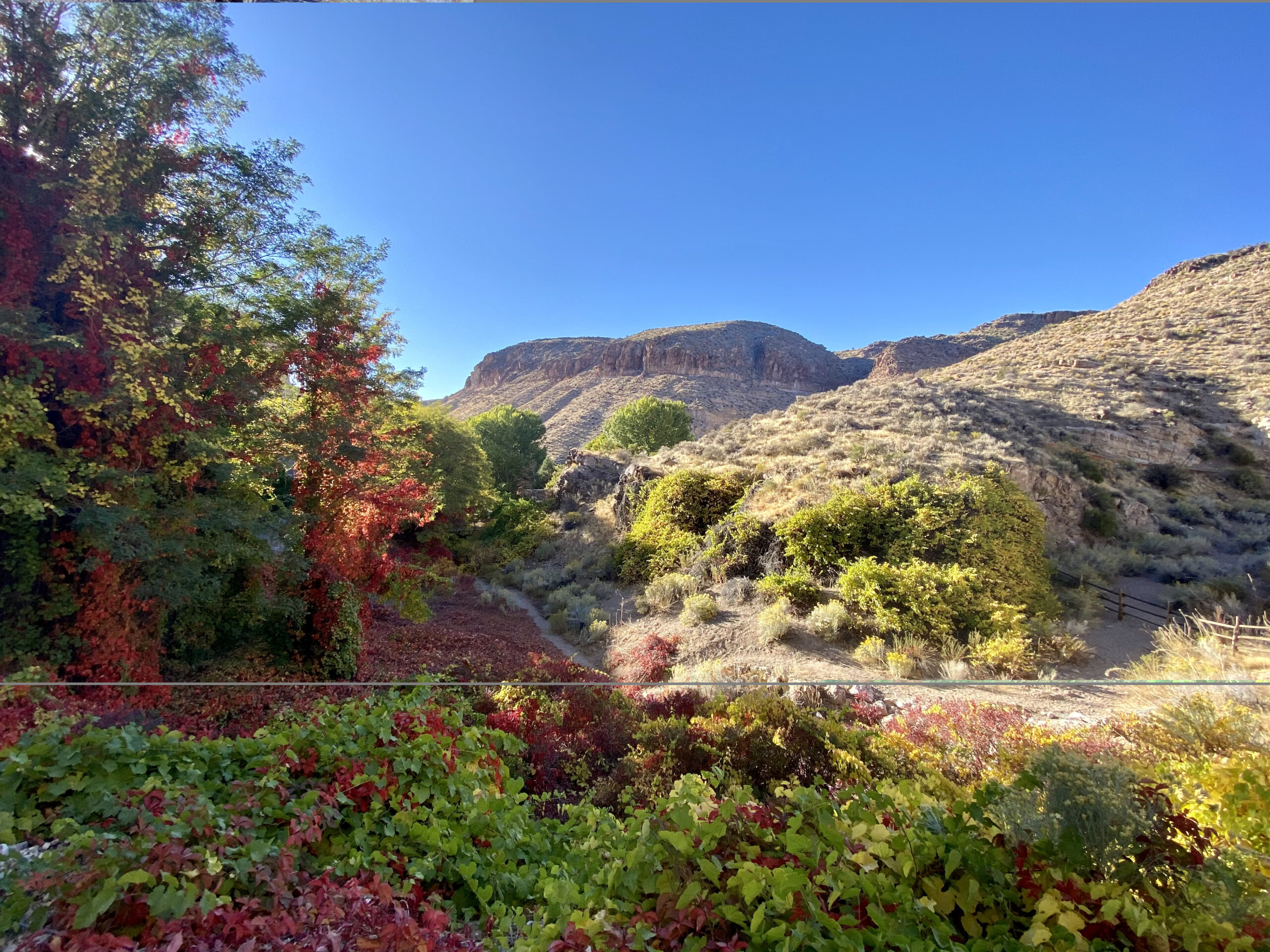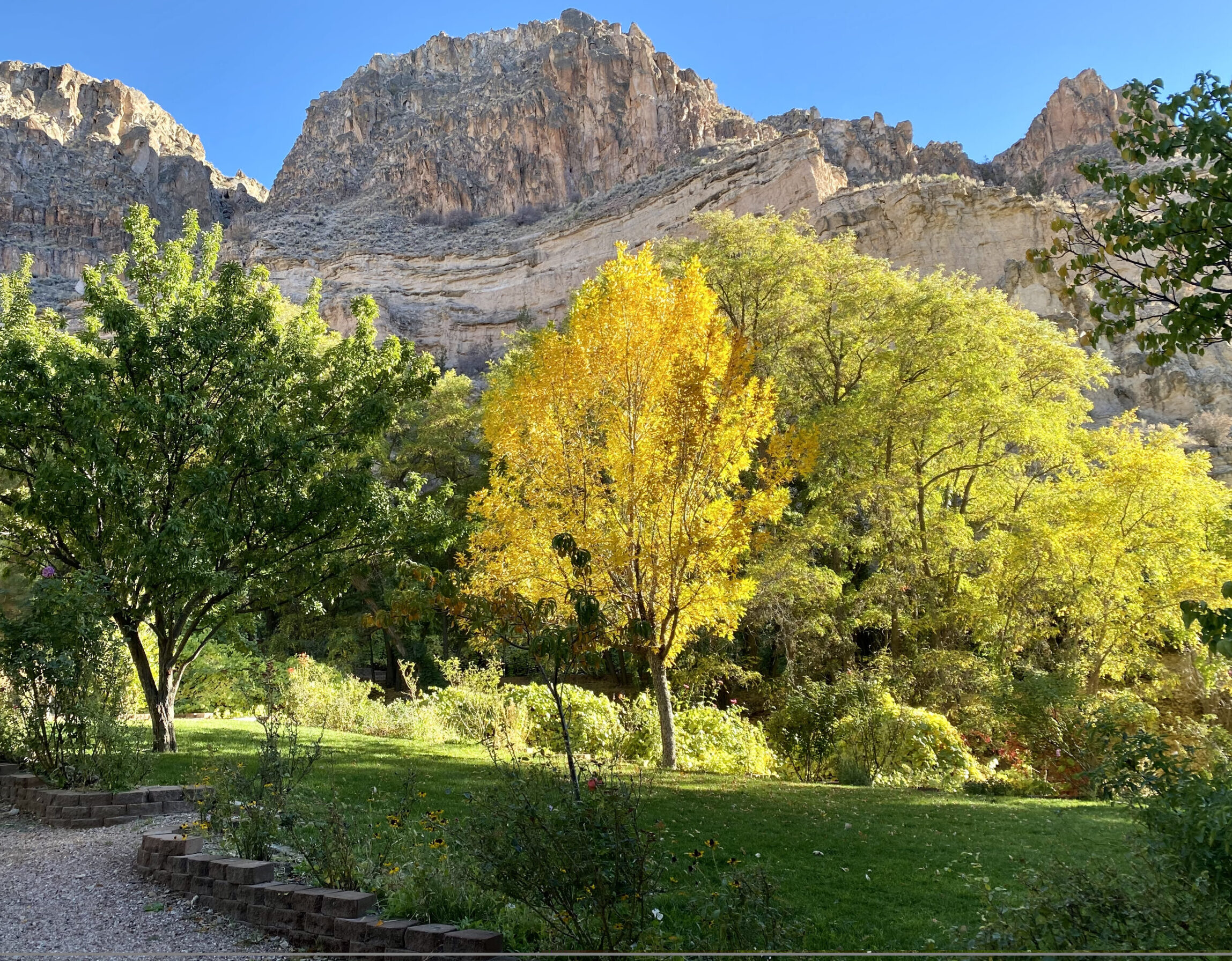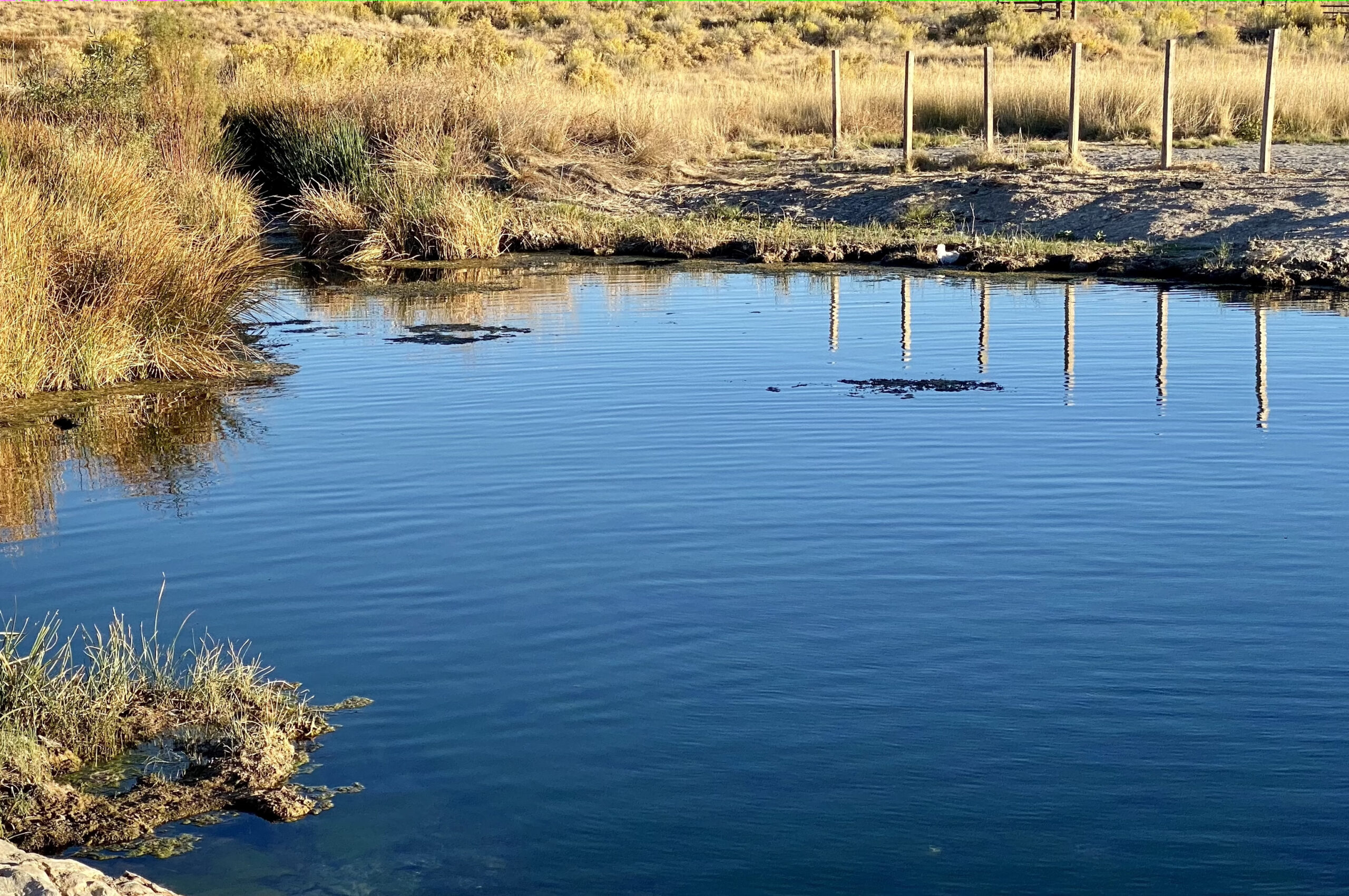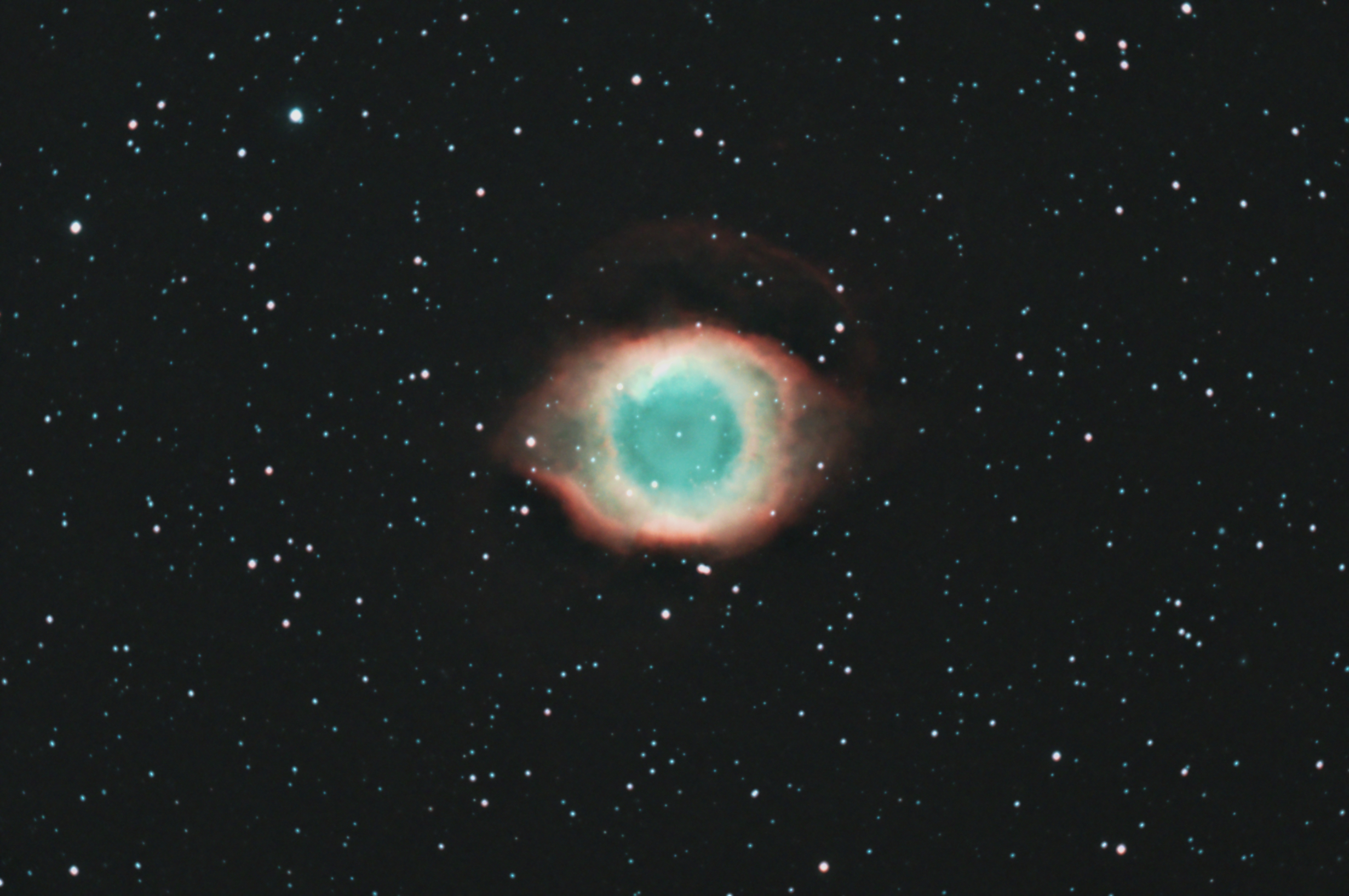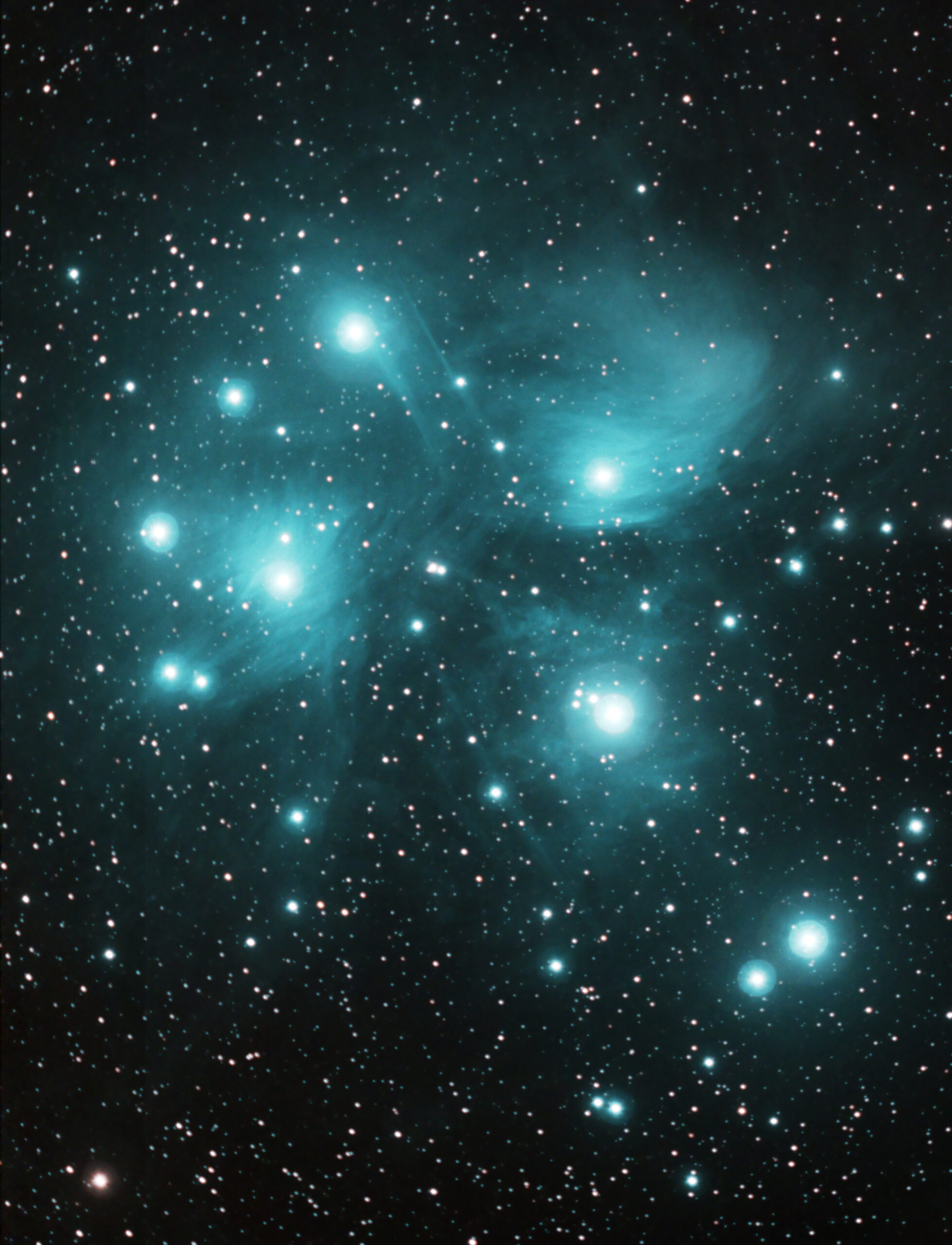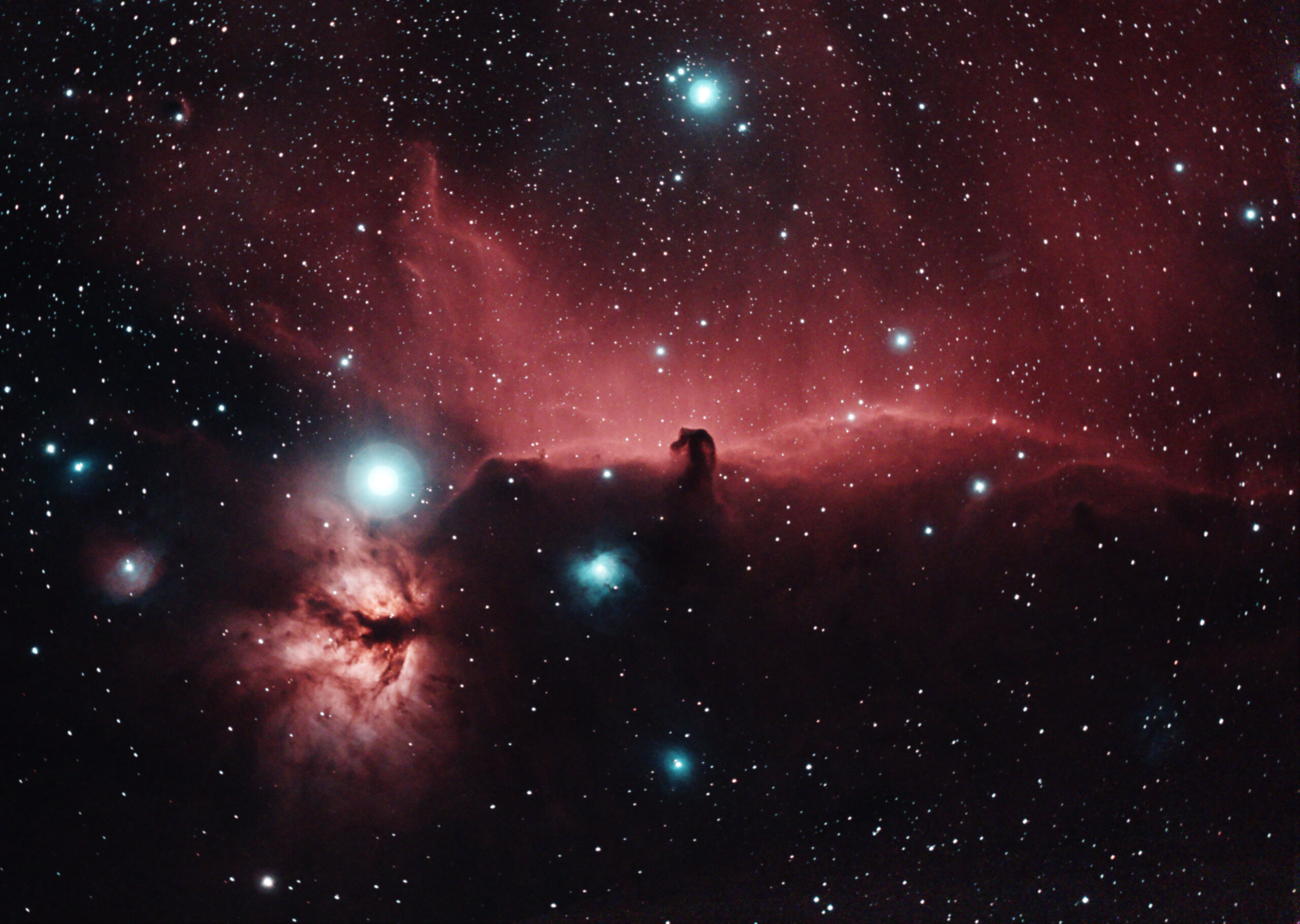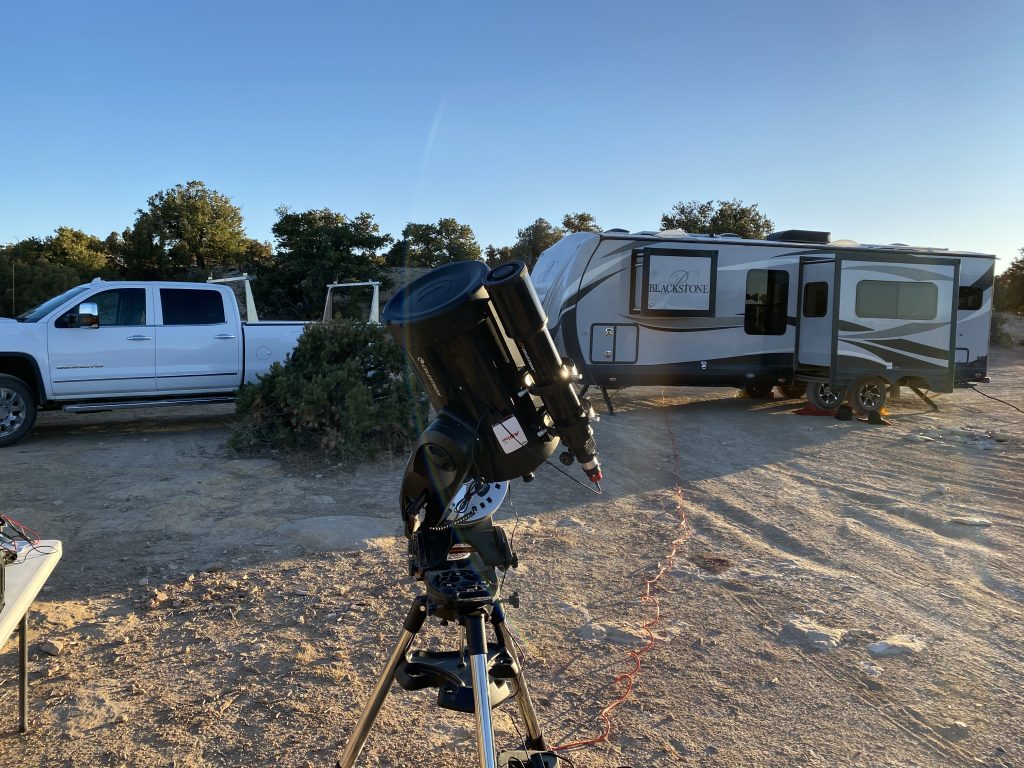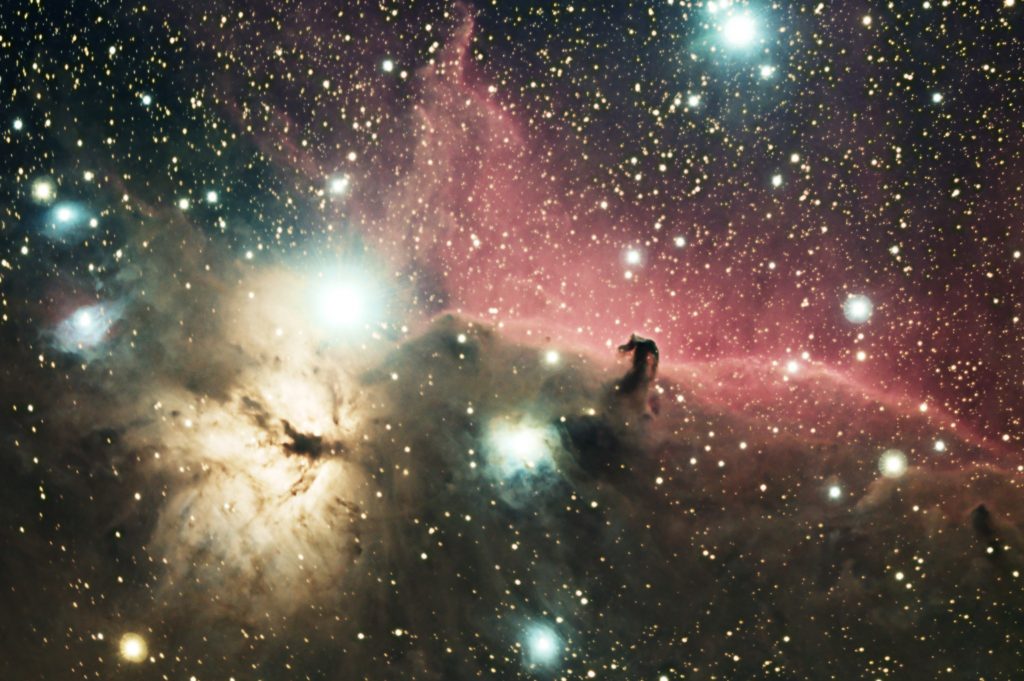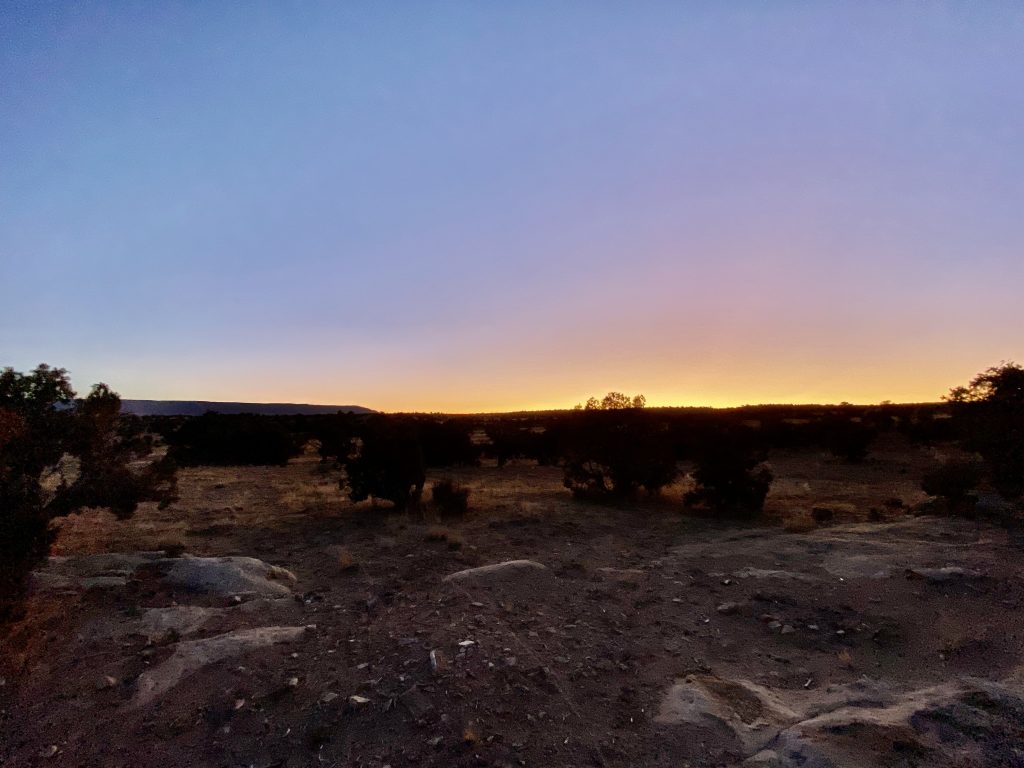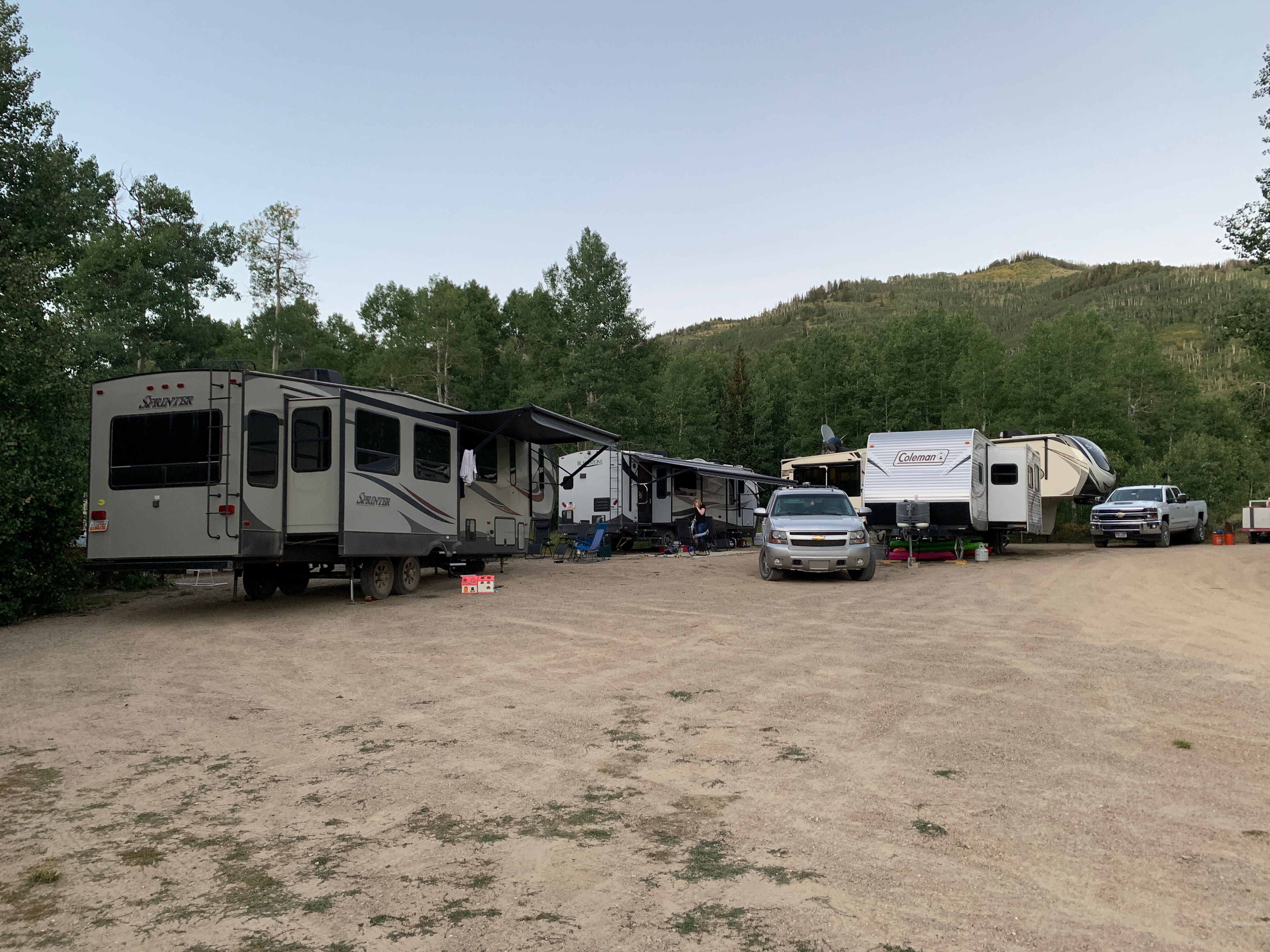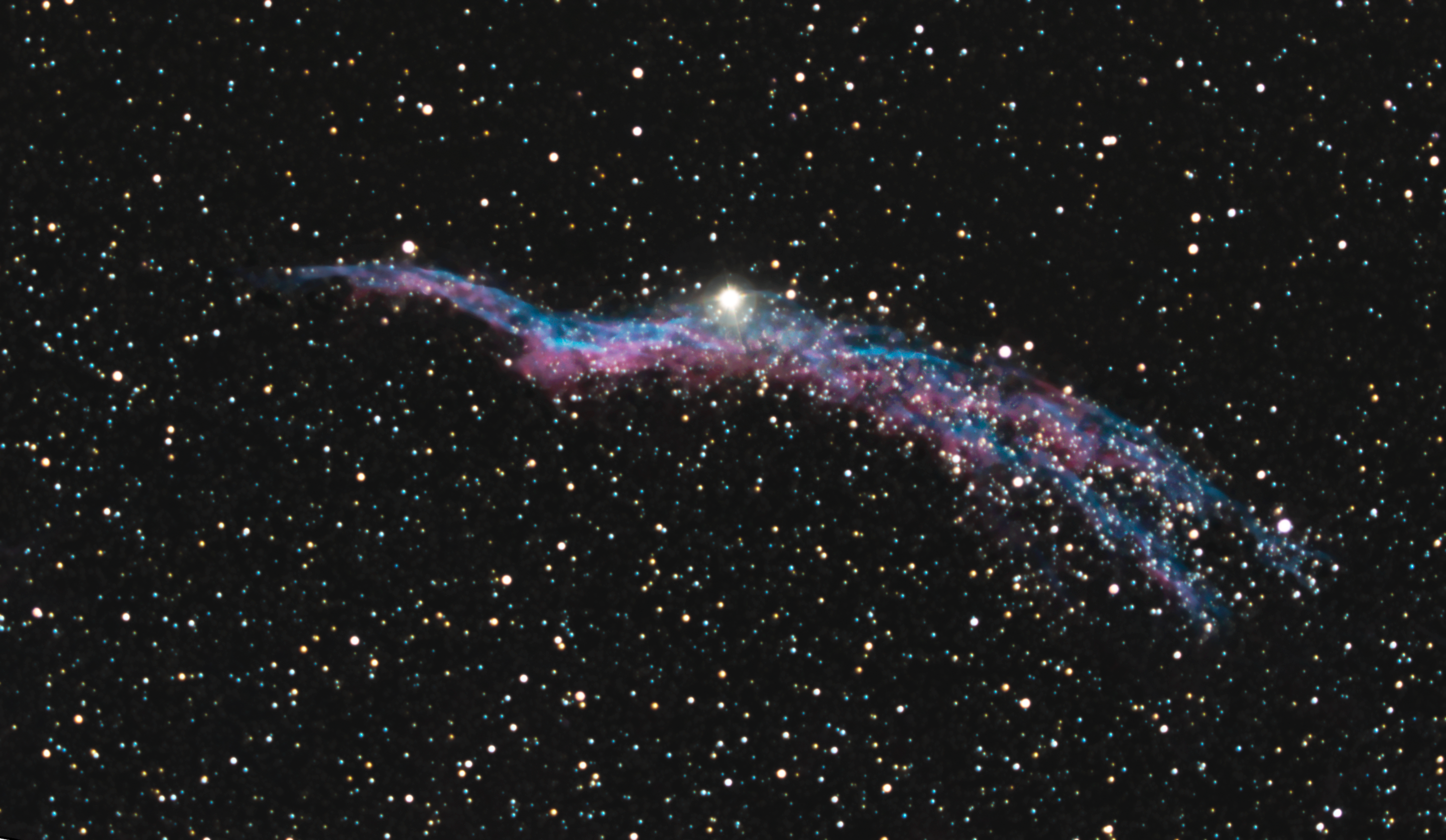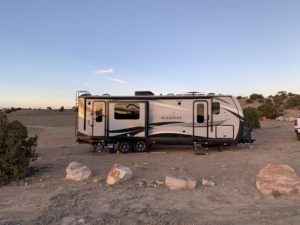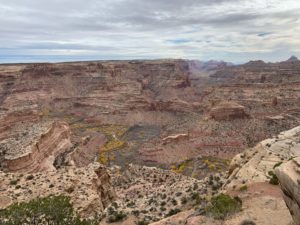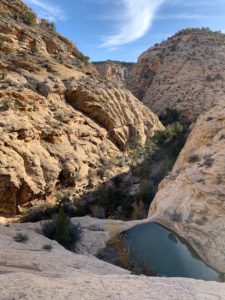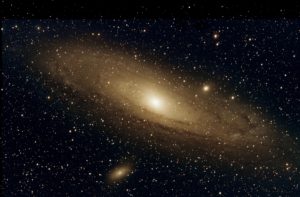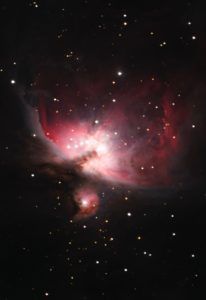On October 15, 2020, we left for a three-night stay in Cathedral Gorge State Park near Panaca, Nevada. We chose this location primarily for the warm daytime temperatures and the clear skies forecasted for astrophotography. The park didn’t disappoint. The daytime temperatures reached 80 degrees, the early morning temperatures were close to 40 degrees, and the night skies were clear and reasonably dark.
We first populated site 16. This site is a nice pull-through that will easily support 35-40 foot long RVs. It is a beautiful site with several shade trees. It was the last appropriately sized site remaining when we arrived. However, no location near the site is suitable for viewing the night sky. The next day we moved to site 6. Site 6 is well distanced from other campers, has a great tent pad, offers great night sky views, but doesn’t have much shade.
All of the campground sites have electrical hookups offering 20, 30, and 50 Ampere circuits. There are also water spigots throughout the park. Like many state parks, there are bathrooms with flush toilets, sinks with running water, and showers. There is a paved bicycle trail that runs from Panaca to Cathedral Gorge State Park. It would be a fun place to bring bicycles and enjoy the ride.
We arrived around noon on the 15th, set up camp, and then went on a 4-mile loop hike. We started the loop an hour before sunset, hoping to catch dusk and wildlife it might bring. We didn’t see any wildlife, but the scenery was interesting and beautiful.
We also enjoyed investigating “the caves” that aren’t really caves at all. They are narrow slot canyons that aren’t very long but quite tall. It’s a little like a cave without a ceiling. There aren’t very many of them, but it’s a fun activity. There are also a few ruins left by the CCC built in the ’30s. They also left a wood and mud sunshade that is now used as a picnic area.
On Friday afternoon, we took a short road trip through Caliente, Nevada to Kershaw-Ryan State Park. We stopped for burgers, fries, and drinks in Caliente and took them to the state park for a picnic. This park is an amazingly beautiful oasis in the middle of a very stark desert. You can see how arid the background of this photo is, but luscious vegetation can be seen in the foreground.
This park was once someone’s farm, and they grew fruit trees and grapes. There is a natural spring that still runs today. While it was beautiful when we were there, I can only imagine the relief from the heat this place yields summer visitors. After lunch, we took a couple of very short hikes around this tiny state park.
After leaving Kershaw-Ryan State Park, we went to Panaca Spring. This is a warm, not hot, spring that is used today to irrigate the nearby farms. However, before it escapes the initial pool, it is a fun place to swim. The water is clear, allowing good views of the numerous small fish. This time of year, the spring is about 4′ deep and about 84 degrees. It is certainly not a soaking kind of hot spring, but it isn’t a cold swimming hole either. It was perfect for a warm and sunny day swim.
One evening, I set up the telescope to show my son and wife some of the planets. We were able to observe Mars, Jupiter, Saturn, and Uranus. Uranus was just a dot like the stars, Mars wasn’t as red as they expected, but Jupiter and especially Saturn were very pleasing to observe. We also looked at several galaxies and nebula. It is nice to see the beautiful things that God made for our enjoyment. Later that evening, I connected a camera, computer, and other electronics to enable some astrophotography. I enjoy the combination of the awe-inspiring creation and the technology that enables its capture.
Saturday evening, I captured three deep sky objects: NGC 7293 or the Eye of God, M 45 or Pleiades, and several objects surrounding the Horsehead nebula. These objects are 650, 444, and 1375 light-years from earth, but with modest equipment and some post-processing can be seen in all their glory.
Cathedral Gorge State Park was a fun and relaxing place to spend a few days in the fall. The temperatures were great, the hikes and scenery were awesome, the outings were fun, and the astrophotography was rewarding. There are certainly darker spots for astrophotography, but I think the images are evidence that it is dark enough.
We’ve been to this state park before, but we’ll probably go again. Young children would really like “the caves,” and we can’t resist taking grandchildren to places we think they’ll like. I can’t wait to see and hear them among the rocks and crevices of Cathedral Gorge State Park.
| Nights | Total Nights | Miles | Total Miles |
|---|---|---|---|
| 3 | 174 | 624 | 17690 |

